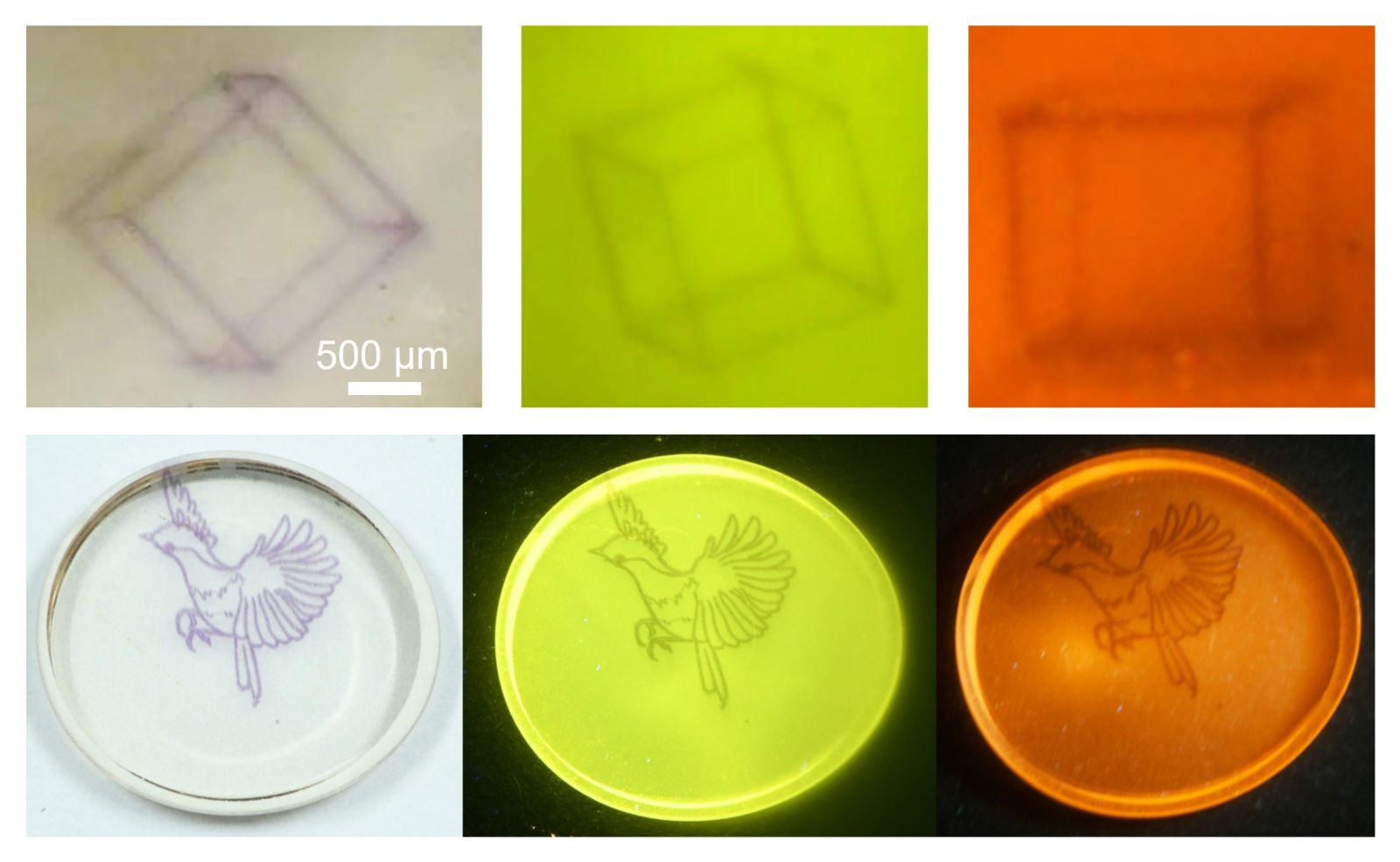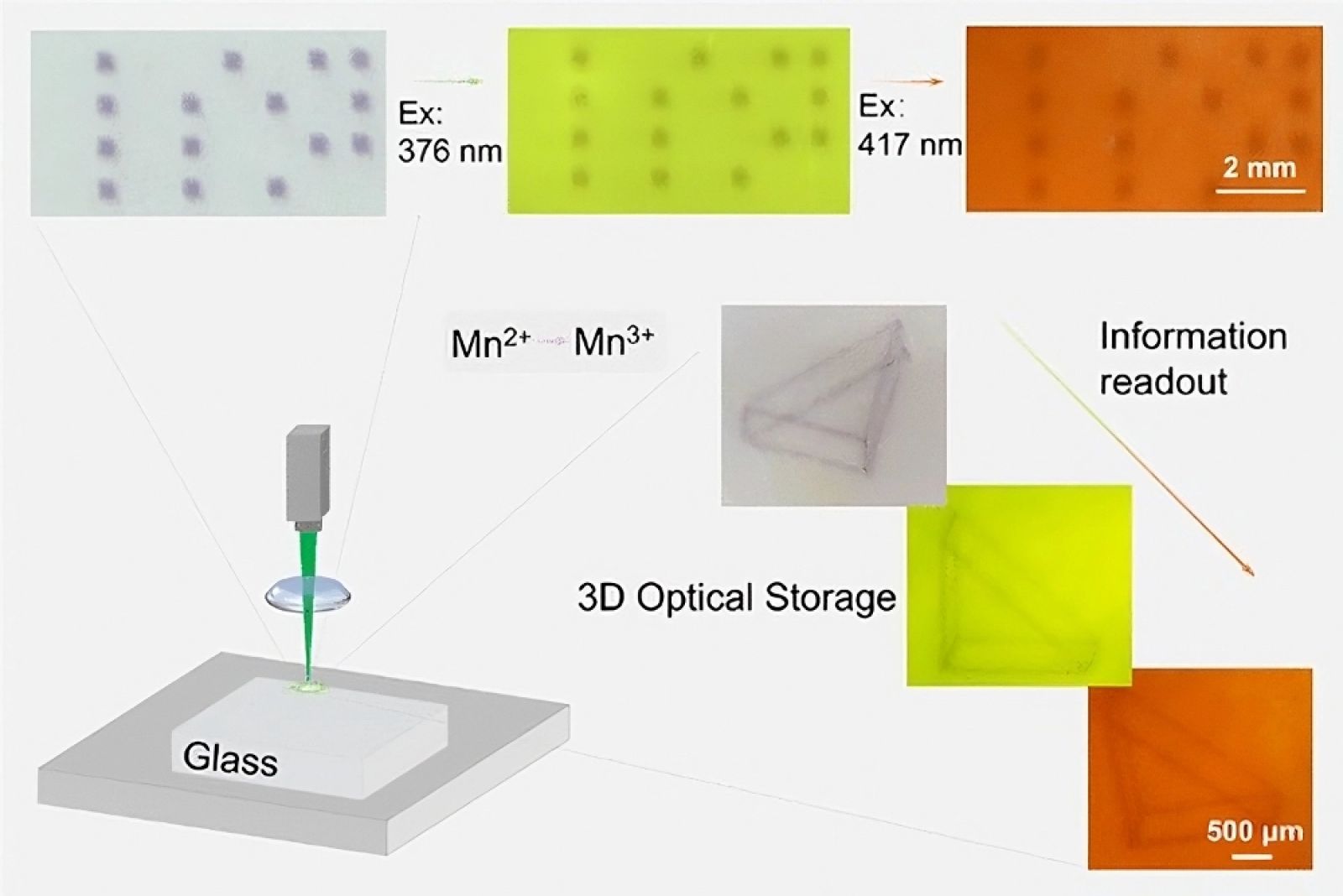This glass stores rewritable 3D data at will 📀
Published by Cédric,
Article author: Cédric DEPOND
Source: ACS Energy Letters
Other Languages: FR, DE, ES, PT
Article author: Cédric DEPOND
Source: ACS Energy Letters
Other Languages: FR, DE, ES, PT
Follow us on Google News (click on ☆)

Researchers have recently developed a doped photochromic glass capable of changing color under the effect of different light wavelengths. This material, made from modified gallium silicate with magnesium and terbium ions, allows for the engraving of reversible 3D patterns. Potential applications range from high-capacity optical storage to cryptography, as well as industrial and military uses.
Photochromic glass: a rewritable optical memory
Photochromic glass is known for its ability to change color under the effect of light. This phenomenon, called reversible photochromism, is already used in eyeglass lenses that darken in the sun. However, researchers have pushed this property further by doping the glass with magnesium and terbium ions.
Using a 532-nanometer green laser, complex patterns have been engraved into the glass. These patterns, initially purple, change color under different wavelengths. For example, terbium emits green light under 376 nm violet light, while magnesium produces red light at 417 nm.

To erase the patterns without altering the glass structure, researchers applied heat at 550 °C (1022 °F) for 25 minutes. This reversibility paves the way for practical applications, particularly for rewritable data storage.
Promising applications for storage and cryptography
Researchers have demonstrated the versatility of this glass by engraving various patterns, ranging from simple dots to QR codes and complex geometric shapes. The achieved resolution is on the order of 5 micrometers, or one-tenth the thickness of a human hair.
The stability of the engraved patterns is another major advantage. The information remains readable after several months, demonstrating the material's durability. Unlike traditional storage media, this glass requires no energy to retain data.
Finally, this technology could be a major asset in cryptography. The ability to read patterns in different colors depending on the light used offers an additional layer of security, ideal for sensitive applications in academic, industrial, and military fields.
To go further: What are the advantages of 3D optical storage?
3D optical storage allows for engraving information in multiple layers of a material, thereby increasing storage density. Unlike CDs or DVDs, which store data on the surface, this technology uses the entire volume of the material, offering much greater capacity.
One of the main advantages is longevity. Traditional media, such as hard drives or USB keys, degrade over time and require energy to maintain data. Glass, on the other hand, can retain information for thousands of years without any power source.
Another advantage is resistance to extreme conditions. Glass is unaffected by temperature variations, humidity, and magnetic fields, making it an ideal medium for long-term archiving. This makes it particularly useful for critical applications, such as the preservation of scientific or historical data.
Finally, 3D technology allows for fast and precise reading and writing. The lasers used to engrave data can achieve resolutions on the order of micrometers, enabling the storage of massive amounts of information in a small space. This precision also opens the door to innovative applications, such as cryptography or augmented reality.